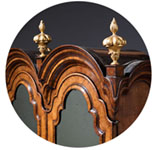Early 18th Century George I Figured Walnut Bureau Bookcase
England Circa 1720
Price on Application
Follow Us
Early 18th Century George I Figured Walnut Bureau Bookcase, England Circa 1720
A superb and exceptionally well proportioned early 18th century figured walnut ‘pagoda topped’ double dome bureau bookcase, circa 1720 England.
The upper section is surmounted with what is believed to be the original solid walnut finials and soft bevelled mirror plates, opening to a removal bank of walnut veneered and feather banded drawers, cantered by pigeonholes below two shelves. Candle slides are neatly stowed below the bookcase doors to reflect the light.
To the moulded bureau, the fall opens to reveal pigeonholes, long and short asymmetric drawers each beautifully veneered in figured walnut and feather banded, cantered by a cupboard door which neatly conceals an open compartment and drawer. Below the fall, two short and two long graduating oak lined drawers are each book-matched in superb sections of hand-cut figured walnut veneers over bun feet.
It should be noted that this exceptional desk and bookcase, is not only of the finest cuts of figured walnut veneer but exquisitely made at the pinnacle of design which had gradually evolved predominantly in London, during the late 17th and early 18th century.
The actual description ‘desk-and-bookcase’ appears to be first recorded in the accounts of the Royal cabinet-maker Gerrit Jensen (fl.1680-d.1715) who supplied several for the Royal Household from 1710 (Bowett, op. cit.), and another described as ‘a walnut writing desk, the top for books and patons and glass in the doors asked’ for the 5th Earl of Salisbury, Hatfield House. Another maker of this form of desk was the London cabinet-maker John Gumley (1691-1727) who advertised in Richard Steele’s Lover on April 24 1714 that he ‘hath taken for a Ware-house, and furnished all the upper part of the New Exchange in the Strand’ continuing with an extensive list of his stock including ‘Desks and Bookcases.’ In 1714 he supplied one of these in walnut to James 1st Duke of Montrose for the sum of £11.
Russian cabinetwork of this period was strongly influenced by Tsar Peter I return to Russia after his studies in London. He subsequently sent twenty-four cabinetmakers who were working in Amsterdam to London to train as furniture makers. One of these cabinetmakers named Fedor Martynov made furniture for the Empress Anna Ioannovna. Martynov’s drawings are almost identical to the present piece.
Dimensions
Height: 90.56 in. (230 cm)
Width: 40.56 in. (103 cm)
Depth: 23.23 in. (59 cm)
Literature
Mallett’s Great English Furniture, London: Bullfinch Press 1991, p.248, fig 287, by Lanto Synge,
English Furniture 1660 – 1714 From Charles II to Queen Anne, by Dr Adam Bowett,
Woodbridge: Antique Collector’s Club, 2002 Chapter 7 Case Furniture 1689 – 1714 pp.221-223 fig. 7:53
A walnut bureau bookcase of the same form and period sold from the private collection of Patricia Kluge at Albemarle House in Virginia, USA on the 9th June 2010
PREVIOUSLY SOLD
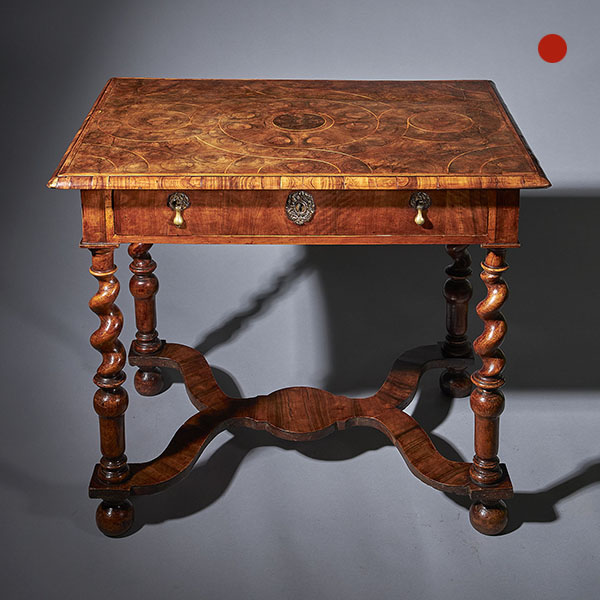
William and Mary Olive Oyster 31” Table
An exceptional and extremely rare William and Mary Olive Oyster 31” Table, Circa 1670-1690. Inlaid with holly the moulded and banded top sits above a frieze drawer, beautifully raised on original freely carved Solomonic or twist legs, terminate on reverse pears and joined by ‘y’ shaped stretcher veneered in cross-grain olive.

17th Century Charles II Olive Oyster Floral Marquetry Table, Circa 1680-1690
17th Century Charles II Olive Oyster Floral Marquetry Table, Circa 1680-1690 SoldFollow Us17th Century Charles II Olive Oyster Floral Marquetry Table, Circa 1680-1690 Floral marquetry inlaid olive oyster and ebony side table, attributed to...

18th Century George I Walnut Shepherds Crook Arm Chair with Period Needlework
18th Century George I Walnut Shepherds Crook Arm Chair with Period Needlework Sold[wpforms_selector form_id="11387" show_title="on" _builder_version="4.22.1" _module_preset="default" custom_margin="-30px||||false|false"...
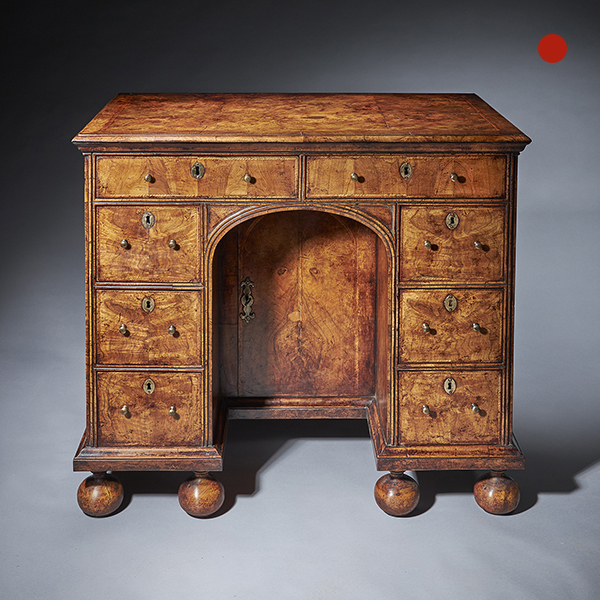
Queen Anne Walnut Kneehole Desk
The fine and rare Queen Anne (1702-1714) burr and highly figured walnut kneehole desk.
Above six solid walnut bun feet and cross-grain ogee moulding, six small drawers surround a double dee moulded edged kneehole under two long drawers
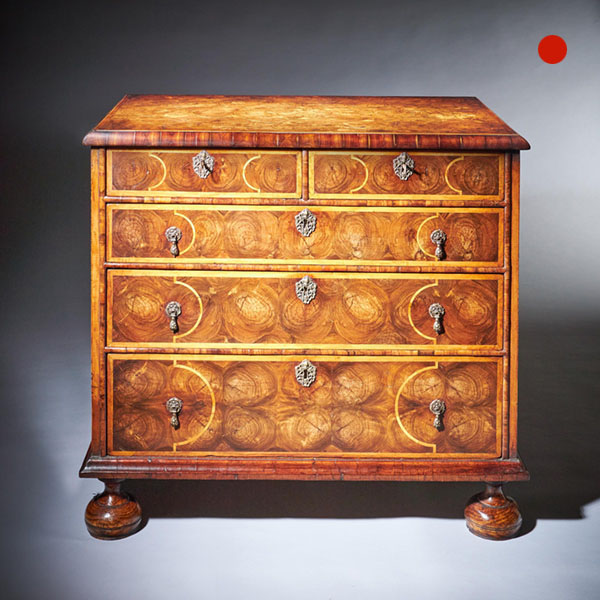
A Fine William and Mary Olive Oyster and Laburnum Chest, Circa 1680-1700
A Fine William and Mary Olive Oyster and Laburnum Chest, Circa 1680-1700 SoldFollow UsA Fine William and Mary Olive Oyster and Laburnum Chest, Circa 1680-1700 The rectangular cross-grain Laburnum moulded holly banded top is veneered in...
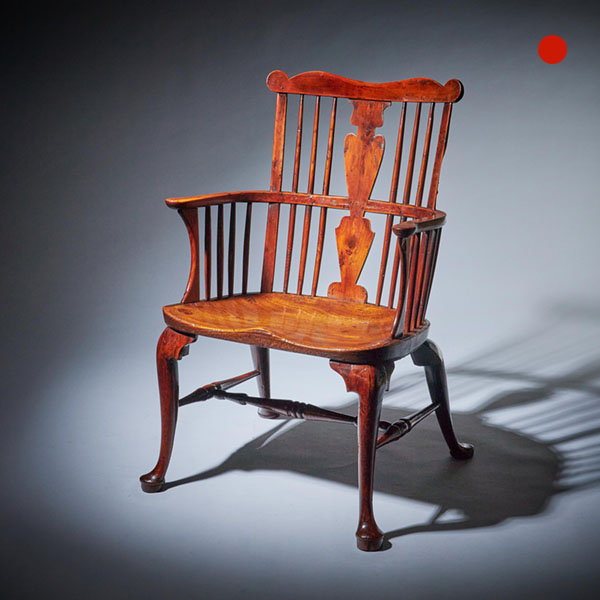
18th Century George III Yew and Elm Thames Valley Comb-Back Windsor Chair
18th Century George III Yew and Elm Thames Valley Comb-Back Windsor Chair SoldFollow Us18th Century George III Yew and Elm Thames Valley Comb-Back Windsor Chair The exceptional and rare yew and elm comb-back Regional Windsor chair of large...

William and Mary Olive Oyster 31” Table
An exceptional and extremely rare William and Mary Olive Oyster 31” Table, Circa 1670-1690. Inlaid with holly the moulded and banded top sits above a frieze drawer, beautifully raised on original freely carved Solomonic or twist legs, terminate on reverse pears and joined by ‘y’ shaped stretcher veneered in cross-grain olive.

17th Century Charles II Olive Oyster Floral Marquetry Table, Circa 1680-1690
17th Century Charles II Olive Oyster Floral Marquetry Table, Circa 1680-1690 SoldFollow Us17th Century Charles II Olive Oyster Floral Marquetry Table, Circa 1680-1690 Floral marquetry inlaid olive oyster and ebony side table, attributed to...

18th Century George I Walnut Shepherds Crook Arm Chair with Period Needlework
18th Century George I Walnut Shepherds Crook Arm Chair with Period Needlework Sold[wpforms_selector form_id="11387" show_title="on" _builder_version="4.22.1" _module_preset="default" custom_margin="-30px||||false|false"...

Queen Anne Walnut Kneehole Desk
The fine and rare Queen Anne (1702-1714) burr and highly figured walnut kneehole desk.
Above six solid walnut bun feet and cross-grain ogee moulding, six small drawers surround a double dee moulded edged kneehole under two long drawers

A Fine William and Mary Olive Oyster and Laburnum Chest, Circa 1680-1700
A Fine William and Mary Olive Oyster and Laburnum Chest, Circa 1680-1700 SoldFollow UsA Fine William and Mary Olive Oyster and Laburnum Chest, Circa 1680-1700 The rectangular cross-grain Laburnum moulded holly banded top is veneered in...

18th Century George III Yew and Elm Thames Valley Comb-Back Windsor Chair
18th Century George III Yew and Elm Thames Valley Comb-Back Windsor Chair SoldFollow Us18th Century George III Yew and Elm Thames Valley Comb-Back Windsor Chair The exceptional and rare yew and elm comb-back Regional Windsor chair of large...
YOU MAY ALSO LIKE
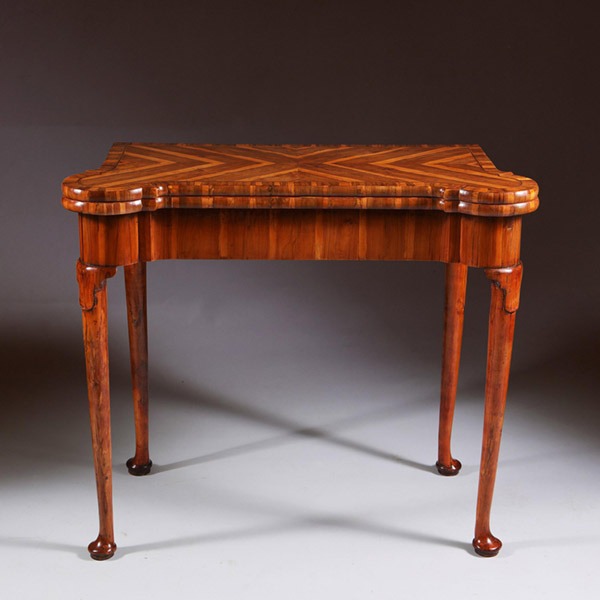
Museum Grade George I Cocus Wood Card Table, Circa 1725, England
Museum Grade George I Cocus Wood Card Table, Circa 1725. England £32,000Follow UsMuseum Grade...
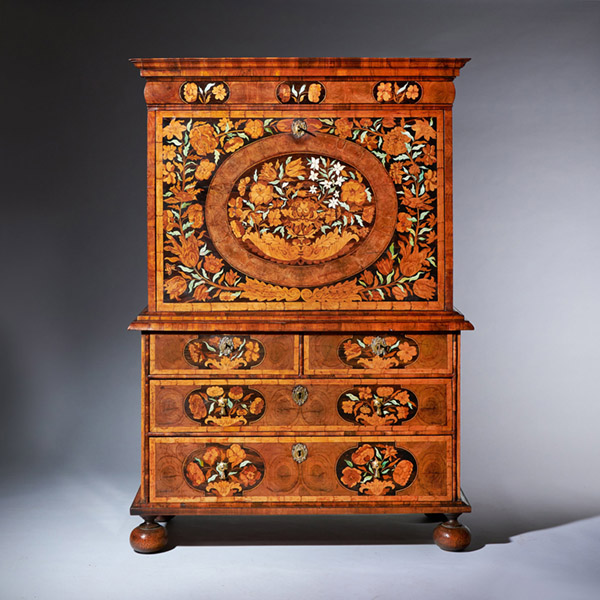
17th Century William and Mary Olive Oyster Marquetry Escritoire, Circa 1680
17th Century William and Mary Olive Oyster Marquetry Escritoire, Circa 1680 £60,000[wpforms_selector form_id="11387" show_title="on" _builder_version="4.22.1" _module_preset="default" custom_margin="-30px||||false|false"...

Fine Two-Day Marine Chronometer Signed Charles Frodsham
Fine Two-Day Marine Chronometer Signed Charles Frodsham £6,500Follow UsFine Two-Day Marine...
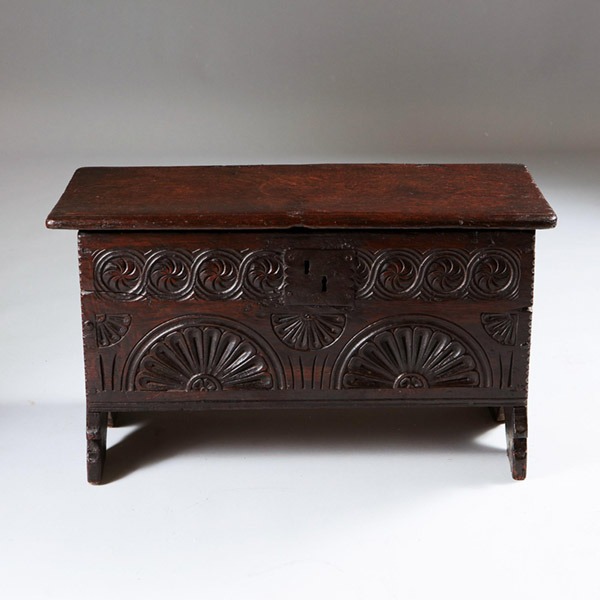
A Rare 17th Century Charles II Carved Oak Childs Coffer of Diminutive Proportion
A Rare 17th Century Charles II Carved Oak Childs Coffer of Diminutive Proportion £2,800Follow UsA...

A Rare and Important Charles II 17th Century Table Clock by Henry Jones
A Rare and Important Charles II 17th Century Table Clock by Henry Jones £85,000Follow UsA Rare and...
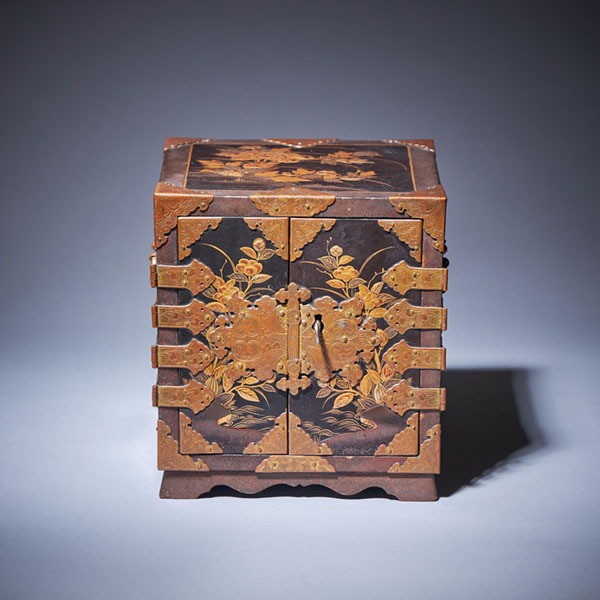
Important Early Edo Period 17th Century Miniature Japanese Lacquer Cabinet
Important Early Edo Period 17th Century Miniature Japanese Lacquer Cabinet £36,000Follow...

Museum Grade George I Cocus Wood Card Table, Circa 1725, England
Museum Grade George I Cocus Wood Card Table, Circa 1725. England £32,000Follow UsMuseum Grade...

17th Century William and Mary Olive Oyster Marquetry Escritoire, Circa 1680
17th Century William and Mary Olive Oyster Marquetry Escritoire, Circa 1680 £60,000[wpforms_selector form_id="11387" show_title="on" _builder_version="4.22.1" _module_preset="default" custom_margin="-30px||||false|false"...

Fine Two-Day Marine Chronometer Signed Charles Frodsham
Fine Two-Day Marine Chronometer Signed Charles Frodsham £6,500Follow UsFine Two-Day Marine...

A Rare 17th Century Charles II Carved Oak Childs Coffer of Diminutive Proportion
A Rare 17th Century Charles II Carved Oak Childs Coffer of Diminutive Proportion £2,800Follow UsA...

A Rare and Important Charles II 17th Century Table Clock by Henry Jones
A Rare and Important Charles II 17th Century Table Clock by Henry Jones £85,000Follow UsA Rare and...

Important Early Edo Period 17th Century Miniature Japanese Lacquer Cabinet
Important Early Edo Period 17th Century Miniature Japanese Lacquer Cabinet £36,000Follow...
